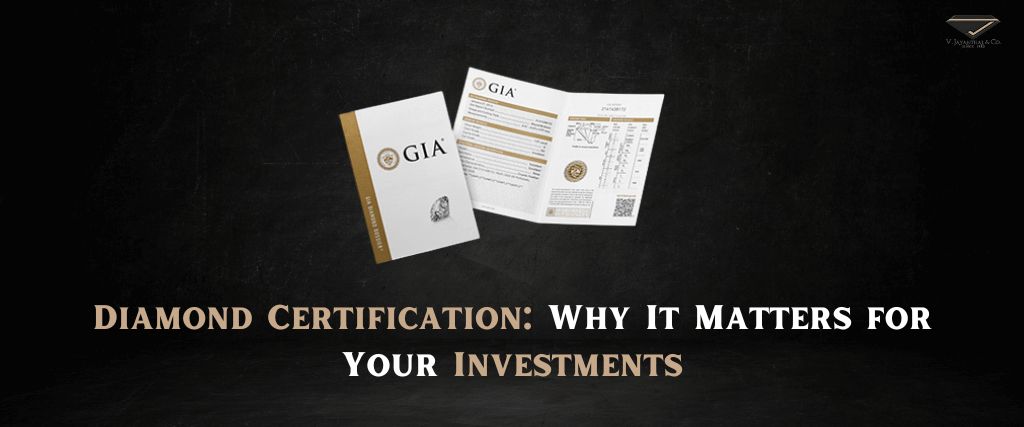
Wondering what diamond certification is? Well, it guarantees that the diamond you receive is worth the price you paid. Let’s learn about its importance and why it matters in this blog. Buying a diamond is a tedious process; you have to look for a perfect fit from thousands of options that match your tastes and suit your pocket. Furthermore, it doesn’t stop here. You must hunt for sufficient documentation to support the legitimacy of your diamond. Diamond certification is a crucial aspect of the buying process as it provides an objective evaluation of the diamond's quality and characteristics. This certification is typically issued by reputable gemological laboratories and includes detailed information about the diamond's cut, clarity, color, and carat weight. Having this documentation not only ensures that you are getting what you paid for but also gives you peace of mind knowing that your diamond has been thoroughly assessed by experts in the field. One obvious difference between them is their price tag. Certified diamonds cost more than uncertified ones, but it is important and well worth the investment to purchase a diamond with a certificate. In this blog, we will explain in detail what diamond certification is and why it is an investment.
A diamond certification or grading report is a scientific analysis of diamonds offered by an independent gem laboratory. The four characteristics of a diamond—carat (weight), cut, colour, and clarity—are measured.
The final grading has a considerable impact on the diamond's price because each laboratory grades and characterizes its gems differently; in fact, occasionally the variances in reports can be significant.
However, since diamond certificates are differentiated, the price and value of diamonds across various certifications cannot be compared.
Diamond certification allows the buyer to get an idea of the real value of their purchase. As a result, certified diamonds are regarded as the most trustworthy diamonds in the market.
Apart from this, certified diamonds have an inscription on their girdle. The diamond's grade number is simply inscribed using a tiny laser. In case you do not have the paper, the inscription on the girdle allows an expert to gather data about your diamond without any hassles. Basically, diamond certification and the inscription on the girdle go hand in hand.
Diamond certification is essential and must not be overlooked by buyers at any cost. Why? Let’s see.
Through diamond certification, professional geologists and trusted lab authorities vouch for the quality of your diamond and give an apt report of its colour, carat, cut, and clarity. With this diamond certificate, you can prove the authenticity of your diamond on the market. Also, with certification, diamonds get a label that justifies their value for their price and also offers safeguards in cases of reselling and replacement.
However, it's crucial to remember that while diamond certifications may justify the value you receive for your money, they have no effect on the diamond's market value.
Overall, diamond certification develops trust in your diamond by enhancing its reputation.
You should acquire diamonds with a certificate for two key reasons:
One additional benefit of diamond certificates is that they simplify gem shopping. Since many of the subtle differences between diamonds are invisible to the naked eye, it is helpful to compare the 4 Cs listed on the diamonds’ certificates.
It's important to focus on consistency rather than grading strictness when comparing the grading reports of two or more entities. The grading report from one lab differs from that of another because various laboratories use different criteria to evaluate the quality of diamonds.
Let's imagine a lab consistently assigns a single grade for clarity that is greater than any other lab. In this case, the lab is not any less reliable. Thus, instead of just comparing the grades of different lab reports, look for consistency in one entity’s grading report.
Contrary to common belief, there is no set formula that governs the grading of diamonds. Each laboratory has its own specific definition of a particular grade range, and it might differ from others.
Therefore, it's crucial to have faith in the organisation and research its standing in the marketplace.
Every lab has the liberty to define and follow its own individual grading technique. Thus, their reports differ from each other. When it comes to the diamond's colour, some laboratories are forgiving, while others could sacrifice clarity. Therefore, having a sound knowledge of the grading laboratory is a must. It allows you to ensure that the value of the diamond on paper (certificate) is real and not forged.
No matter how reputed the lab is, the price of the diamond must be thoroughly evaluated. The diamond's quality must be able to support the price shown on the certificate. Additionally, the diamond's quality, as stated in the certificate, must be seen in person. It is advised to consult an expert if you have any concerns regarding the diamond's quality.
In a word, diamond certification is an important stage in the diamond-buying process that must never be skipped. It gives you a clear idea of what you’re purchasing and whether you’re paying the right price for it or not. Further, after purchase, a diamond certificate can boost the credibility of your diamond in the market and be useful in reselling and replacement. V. Jayantilal & Co. provides GIA, IGI, and HRD-certified diamonds.
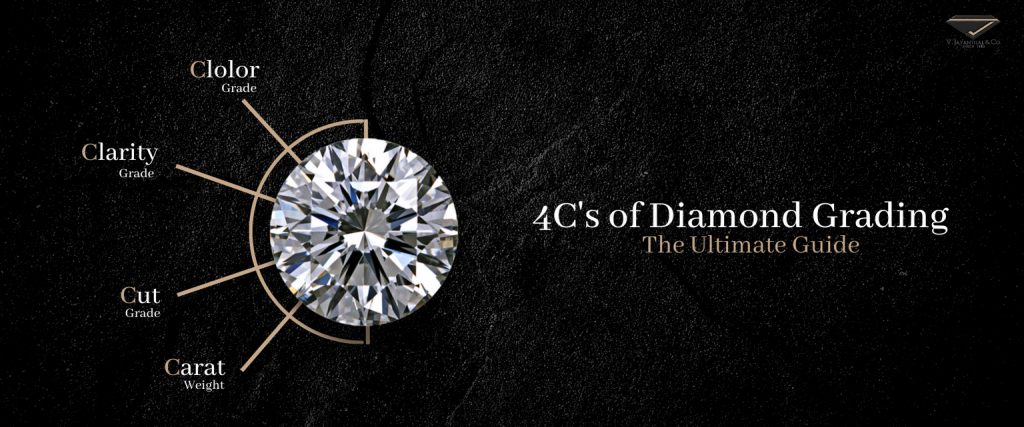
GIA created the 4Cs (Color, Clarity, Cut and Carat) as a global standard method to check diamond quality no matter where in the world. The 4C’s of diamond-cut, color, clarity, and carat – are the widely accepted standard characteristics for a diamond that determines its quality. Based on these attributes, you can evaluate a diamond’s value. Each of the 4Cs plays a vital role in a diamond's beauty. But, selecting just one feature that makes the diamond remarkable is very difficult. The interaction between each of the 4 C’s gives us the ideal shimmering element. In this blog, We'll walk you through the 4C’s of the diamond.
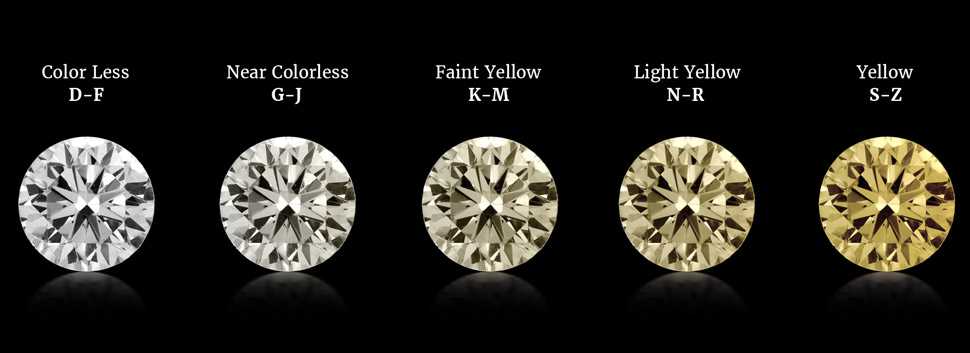
Diamond color is evaluated in terms of how white or colorless a diamond is. It is analyzed based on the lack of color. No hue exists in a pure, structurally flawless diamond. The color grading is based on the lack of color ranging from colorless to yellow, represented by letters from D to Z. Colorless diamonds are the rarest. A diamond with the same structural perfection as a diamond and the same colorlessness as a drop of colourless water is worth more. A diamond's tint is measured using the GIA's D to Z diamond colour grading system, which is used under controlled lighting and by qualified observers. D-colour is the purest, almost colorless and as we go down the color grading scale, diamonds gain a slight tint of yellow or brown color. Most of the time, despite the potential price difference, it is impossible to tell two adjacent colour-graded diamonds apart from the naked eye. However, the minute differences in tint have a significant impact on the value and quality of diamonds. The way a diamond is cut determines how sparkly it will be. Make sure the diamond colour is maintained regardless of the setting and does not obstruct the reflection of white or coloured light before making a purchase of GIA certified diamonds. In contrast to white, colourless diamonds, their natural colors—such as blue, red, and pink—are referred to as "fancy," and their colour grading is distinct. Fancy color diamonds have separate grading protocols. Most individuals are unable to recognise the difference between the two types until they are placed side by side.
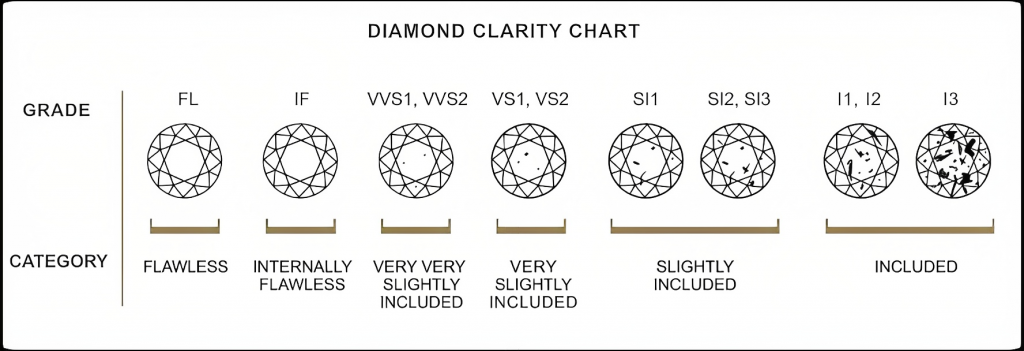
Diamond clarity is the lack of imperfections and blemishes. Diamonds without inclusions or blemishes are rare; however, most qualities may only be observed under 10x magnification. Carbon can be transformed into a diamond by exposing it to extreme heat and pressure. These naturally occurring diamonds are therefore adorned with a variety of internal traits called inclusions and external features called blemishes. The absence of blemishes and inclusions on and in diamonds is what is meant by the term "clarity." The best deals in diamonds are those with a VVS2 or above grade; nonetheless, you shouldn't overvalue the status of a "flawless" diamond. Clarity grades vary from flawless to included, represented by FL to I3. While no diamond is absolutely pure, the closer it gets, the greater its value. The GIA clarity grading scale has 11 specific grades combined into six grading categories. They are:
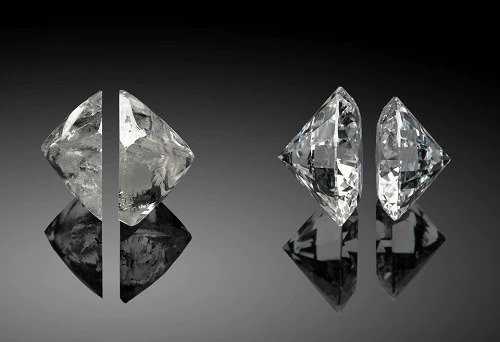
The "cut" of a diamond is probably the most significant aspect of its quality that defines its appeal. More specifically, a diamond's cut grade impacts the ability of the facet to reflect light. The cut grades vary from superior to below average. Fire, scintillation, and brilliance are the three main factors that affect a diamond's sparkle. Fire describes the flashes of colour emitted from a diamond. Scintillation is the term used to describe the light bursts that happen when a moving diamond, light source, or observer is present. Brightness is a combination of pure white light that reflects from the inside and outside of the diamond. The more precisely cut a diamond is, the more eye-catching it is. The ultimate beauty and diamond value are greatly influenced by its cut. Additionally, it is the most complex and technically challenging of the diamond's 4Cs to analyze. The diamond cut is rated as ideal, excellent, very good, good, fair, and poor on the diamonds cut chart. For optimum brilliance and shine, precise workmanship is required for the ideal proportions and angles. It is important to remember that a high rating on the diamond cut table, such as "excellent," does not always translate into an exceptional diamond cut. Excellent cuts make up over 55% of all diamonds sold online. Some are amazing, while others are ordinary.
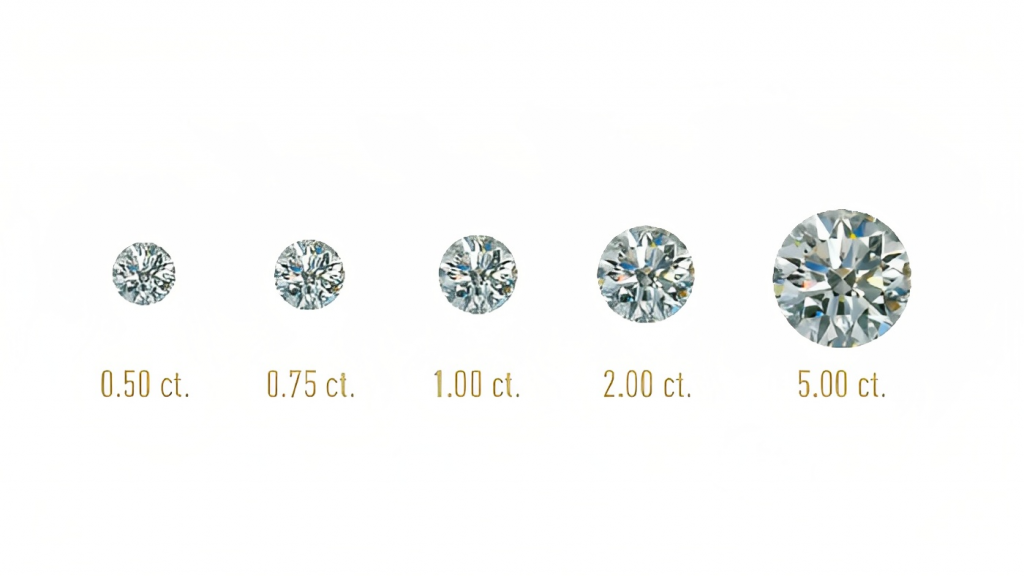
Often when people hear the term “carat weight,” they frequently assume it relates to the diamond's size. In actuality, Carat refers to the weight of the diamond, not how large the gem is. A diamond weighing 1 carat weighs 200 milligrammes. However, the carat size may vary depending on the diamond's shape and cut. A jeweller may use a diamond's 'points' to determine its weight if it is less than one carat. Each carat can be subdivided into 100 ‘points.’ The most objective of the 4Cs is the carat weight. But depending on the other three 4Cs—clarity, colour, and cut—two diamonds of the same carat weight can have very different values (and costs).
Now that we are aware of the 4 Cs of diamond grading, what should be thought about is: what do diamantaires consider the best of the 4 Cs?
All four characteristics are essential in determining how flawless the diamond is. Not one factor can be ignored or given more importance than another. The 4Cs work simultaneously to make a diamond brilliant.
We at V. Jayantilal & Co., sell IGI and GIA certified diamonds to our customers and have followed all the 4Cs of the Diamond Scale.

